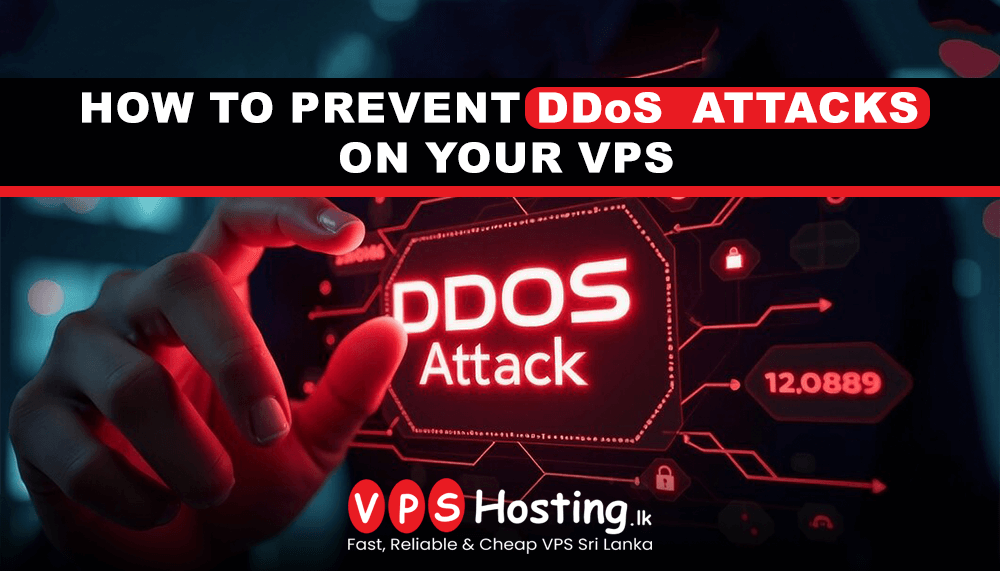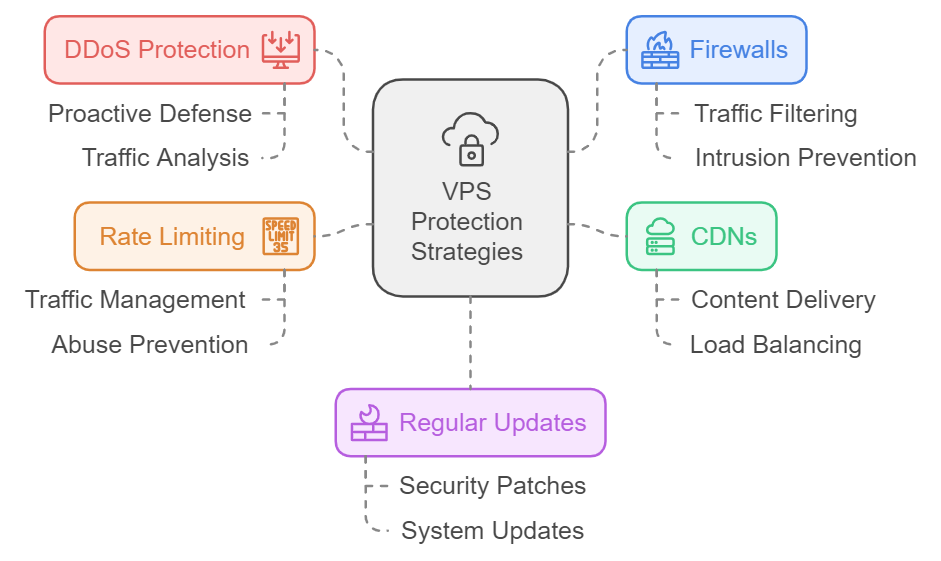
How to Prevent DDoS Attacks on Your VPS
Introduction
In the modern interconnected world, cyberattacks have increased both in number and intensity. One of the most dangerous types of attack is called a DDoS attack. Its major goal is to render the server unable to work because of huge amounts of traffic that simply paralyze its performance and subsequently, cause its downtime. This is a critical risk for businesses relying on Virtual Private Servers for hosting websites, applications or services online. In this article, we go into great detail on the ways one can prevent DDoS attacks on your VPS, which may guarantee better times of uptimes, securities and experiences of users.
1. Understanding DDoS Attacks
The rationale behind DDoS attacks is to overload a server with so many requests that no server, whatsoever, could handle. Such requests generally originate from several compromised devices, better known as a botnet, through the control of a cybercriminal. When a server is overloaded, no legitimate user will be able to access it anymore, and thus disruption will happen to any service dependent on that particular server.
2. Why VPS Are Common Targets?
VPS servers are popular due to flexibility, performance and cost-effectiveness. However, for this reason, they are a very popular target for attackers. Small and medium-sized businesses, startups and growing websites using VPS may not invest massively in their security, thus being easy targets. More importantly, a VPS provides dedicated resources, which means if an attack hits, it can paralyze an entire server rather than shared hosting, where the impact can be dissipated.
3. DDoS Protection Services
The best defense against DDoS attacks involves a DDoS protection service. Many of the VPS hosting service providers, such as VPS Hosting in Sri Lanka, have incorporated built-in DDoS protection capable of automatically detecting and mitigating malicious traffic. They work by filtering out harmful requests and allowing only the legitimate traffic to pass through for smooth performance for the server. The common facilities offered by DDoS protection are traffic analysis, real-time monitoring, and automated attack response mechanisms.

4. Filter Malicious Traffic Using a Firewall
A firewall is one of the simplest security measures that will help your VPS in defense against DDoS. WAF is able to block malicious traffic before it reaches your VPS by filtering of certain types of HTTP requests. The risk can be reduced further by configuring your firewall to block IP addresses linked with known attacks or malicious activity. It serves as the first line of defense through which all suspected traffic, depending on the set rules, is blocked.
5. Load Balancing and Traffic Distribution
Effective load balancing spreads the traffic over numerous servers in such a way that no single server gets overwhelmed. It involves distributing the incoming traffic across a number of servers, with a load balancer. Hence, during high spikes of traffic- like those coming from an attack-the system can absorb such sudden surges in flow; meanwhile, its effect is dampened to the flow on any particular server. Many DDoS protection services use cloud-based load balancing in their deployments to enhance the resilience of the target systems.
6. Monitoring and Traffic Analysis
This is also important because, with constant monitoring of server traffic, you would always notice unusual patterns early. Many DDoS attacks are small in their initial stages, where an attacker sends "test" traffic to understand how your system's defenses work. Using such utilities that monitor and analyze the flow of traffic will enable one to get onsets such as these and take steps beforehand. Monitoring utilities like Zabbix, SolarWinds or Grafana give a view of the performance metrics of your server and detect irregularities in server traffic that may suggest the onset of a DDoS attack.
7. Content Delivery Networks
The best antidote for DDoS attacks undoubtedly is having a Content Delivery Network. Cloudflare or Akamai-hosted CDNs distribute your website to thousands of servers worldwide and, in effect, take the load off from your VPS. In the event of a DDoS attack, the traffic is absorbed by the distributed infrastructure of the CDN, preventing the brunt of the attack from hitting your VPS. This protects your server and accelerates the loading of websites by serving content from servers closer to the end-user.
8. Implement Rate Limiting
Rate limiting is a technique in which you restrain the number of requests a user or IP address can make to your server within a specific time frame. This works effectively against low-and-slow DDoS attacks, where an attacker tries to overwhelm server resources over time. By setting rate limits, you ensure that even if a DDoS attack tries to overload your VPS, only a controlled amount of traffic can get through, thus keeping your resources intact for your legitimate users.
9. Regular Security Updates and Patching
Attackers also frequently exploit vulnerabilities in earlier versions of software to gain access, not to mention DDoS attacks. Keeping the OS, firewall, and other security tools on your VPS up-to-date will prevent most of these types of problems from occurring. Lots of hosting providers, such as VPS Hosting in Sri Lanka, automatically deploy security updates, but you would do well to double-check and confirm this on a regular basis.
10. Turn Off Unused Services and Ports
Limiting unused services and closing unnecessary open ports can be a rather basic but efficient action in protecting your VPS from DDoS attacks. Each opened port or service is a possible way to storm the fortress. Thus, you review the list of services running on your server and disable those you are not using, and by doing so, decrease the surface of probable attacks, making the job of finding vulnerabilities much harder for attackers.
11. Whitelist IP Addresses
If your Virtual Private Server is only accessed through a certain group of users or systems, you may want to use IP whitelisting to restrict access. Letting in traffic from trusted sources only can do a great deal to prevent the chances of a DDoS attack. Using these would be especially good on sensitive parts of your server, such as admin panels or SSH connections.
12. Preventing DNS Amplification Attacks
A DNS amplification attack is that kind of DDoS attack in which an attacker manipulates the DNS queries to flood the target server. To protect your VPS from such attacks, you can take the following steps: disabling the open DNS resolvers and then configuring your DNS server in such a way that it restricts recursive queries.
Conclusion
Protection of the VPS from DDoS attacks is indispensable for ensuring performance and security in today's threat-filled environment. In integrating strong security measures like services related to protection against DDoS, firewalls, CDNs, rate limiting and regular updates, you can reduce such risks to a minimum. These steps will not only help protect your VPS from potential attacks proactively but will also build trust among users so that services remain up and available all the time.

Related Article
For more details on the importance of firewalls in safeguarding your VPS, be sure to read our comprehensive guide on The role of firewalls in protecting VPS servers .